With the nation currently celebrating Women's History Month, the spotlight is shining on women who have made their mark on our great nation and the world, with their accomplishments and contributions. Many of these female trailblazers have made history right here in the empire state of New York.
As the warm weather is slowly approaching, a visit to these destinations are ideal for a day visit or overnight stay!
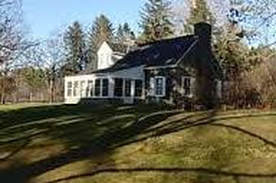 (photo credit: trip advisor)
(photo credit: trip advisor) Hyde Park, New York
Val-Kill Cottage, the simple, two-story stone structure located within the Roosevelt family property at Hyde Park, served as Eleanor Roosevelt's home for the last 17 years of her life.
Eleanor moved permanently to Val-Kill after the death of her husband, President Franklin D. Roosevelt. She once described Val-Kill and its pastoral surroundings as the place "I used to find myself and grow" and where "I emerged as an individual".
The years following her husband's death, Eleanor Roosevelt emerged as a world figure, becoming one of the most well respected former American First Ladies. Beginning with her appointment as American ambassador to the United Nations in 1946, she is remembered for her work on the Universal Declaration of Human Rights, written chiefly at Val-Kill. Her humanitarian activities took her around the globe, often touring nations to promote American concepts of justice, freedom and opportunity. Her pursuit of these ideals led President Harry Truman to identify her as the "First Lady of the World."
From 1945-1962, Eleanor hosted many world figures at Val-Kill, which included Winston Churchill, and she would host groups of neglected children, who had the honor of being read to by Eleanor during their visits during the summer.
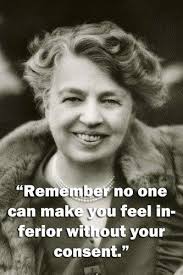
(1884-1962),
Diplomat, Humanitarian
The Eleanor Roosevelt National Historic Site is located in Hyde Park, NY. Val-Kill Cottage is open to the public daily from 9am to 5pm, May through October. November to April, Val-Kill Cottage is open Saturday and Sunday, 9am to 5pm. Call 914-229-9115 or click here for more information.
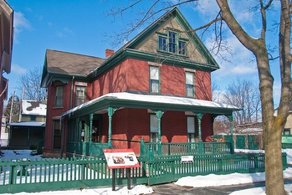 (photo credit: RocParent!)
(photo credit: RocParent!) Rochester, New York
Perhaps one of the most influential and prominent leaders in the American women's rights movement was Susan B. Anthony. Working tirelessly to lead the cause out of her private residence in Rochester, New York, her red brick home became her political and organizational headquarters, and is now a national historical landmark.
Anthony began her activist career in 1849 when she moved to Rochester, where she quickly involved herself in the town's active reform movements and traveled throughout New York organizing abolitionist meetings. Her observation of society's false ideas regarding the superiority of males and women's inferior role was one she became increasingly aware of, before and during the Civil War. But, for Anthony, it was blatantly clear after the Civil War with the ratification of the 14th and 15th Amendments which granted African-American males full citizenship, but not white women, just how much much inequality there existed for women.
It was at this point that Anthony and other feminists formed the Equal Rights Association, and broke with their abolitionist allies. In 1869, Anthony and Elizabeth Cady Stanton formed a militant wing of the women's rights movement that argued for the full acceptance of the 1848 Declaration of Sentiments. During the 1870s and 1880s, Anthony and Stanton formed a powerful partnership, traveling, speaking, and inspiring the formation of suffrage societies all over the United States.
This red brick house was the site of innumerable "cabinet" meetings between Anthony and women's rights movement leaders like Carrie Chapman Catt and Anna Howard Shaw, and is directly tied to one famous example of Anthony's constant agitation. It was in the house's front parlor, after trying to force the Supreme Court to question the 15th Amendment's constitutionality, that Anthony was arrested for illegally casting a ballot in the 1872 Presidential election. In 1906, Susan B. Anthony died here, but left a legacy in a new century that would see women finally begin to gain equality with men.

American Suffragist, Reformer
The Susan B. Anthony House, a National Historic Landmark, is located at 17 Madison St. in Rochester, NY. The property is a house museum. The Susan B. Anthony House is open for tours year-round, Tuesdays through Sundays, 11 a.m. to 5 p.m. The last tour begins at approximately 4:15 p.m. The House is closed on all Mondays and most major holidays. Please telephone 585-235-6124 for the latest information, or visit the Susan B. Anthony House's website for more information.
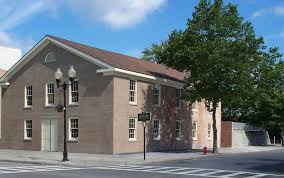 (photo credit: nps.org)
(photo credit: nps.org) Seneca Falls, New York
The Women's Rights National Historical Park celebrates the origins and history of the American women's rights movement and tells the story of the first Women's Rights Convention held in Seneca Falls, New York on July 19-20,1848.
Established in 1980, this National Historical Park covers a total of 6.83 acres of land in Seneca Falls and nearby Waterloo, New York.
The history of this park has its beginnings in the 19th-century in Seneca County, New York, where advocates for temperance, dress reform and abolitionism were very active. This atmosphere of reform and agitation in Seneca Falls and nearby Waterloo led several women to meet at the Hunt House in Waterloo on July 14, 1848, to discuss the inferior status of women.
During the meeting, Elizabeth Cady Stanton, Lucretia Mott, Martha Wright, Jane Hunt and Mary Ann M'Clintock decided to organize an open convention to discuss the position of women in American society. Three days later, the group reassembled to compose the now-famous 1848 Declaration of Sentiments, which mimicked Thomas Jefferson's Declaration of Independence by proclaiming "all men and women are created equal" instead of just "all men are created equal."
On July 18, 1848, Lucretia Mott made the opening presentation. Then Elizabeth Cady Stanton gave the public reading of the Declaration of Sentiments, which formally began a struggle for equality that has continued to the present. A great trip to take with young women to understand the struggles that their foremothers engaged in to secure the rights that today's young girls take for granted.
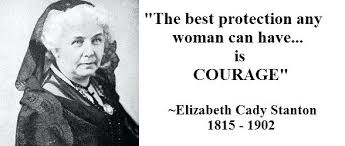
(1815 – 1902)
American Suffragist, Social Activist, Abolitionist
The Visitor Center for the Women's Rights National Historical Park is located at 136 Fall St. (U.S. 20) in Seneca Falls. The Visitor Center is open daily from 9am-5pm. For more information call 315-568-2991. Women's Rights National Historic Park uses the setting of the first Women's Rights Convention in Wesleyan Chapel and the homes of important participants to tell the story of one of the most important movements in American history--the fight for women's equality.
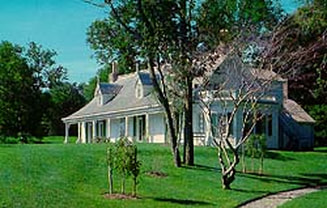 (photo credit: nps.org)
(photo credit: nps.org) Staten Island, New York
With the development of the camera and photographic paper in the late 1800's, Alice Austen of Staten Island, New York made her mark as one of the earliest American photographers.
Alice Austen House, also known as Clear Comfort, is a two-story Victorian cottage-style house where Austen lived for 78 years. Set in pastoral surroundings with extensive ocean views Austen developed all seven thousand of her photographs in Clear Comfort's darkroom. In fact, her detailed pictorials of the home were the basis from which the home was eventually restored.
Austen's work challenged many of the Victorian traditions and often mocked the mores of the era. For example, her photographs featured examples of everyday, ordinary society in late 19th and early 20th century America and she would also have her female subjects in men's clothing as well as showing women smoking in public, which was an illegal act during the Victorian age. The common experiences of life were the focus of her photography, more so than other photographers' work of the day.
Her photographs were displayed in prominent shows and her series on the quarantine facilities for immigrants on Staten Island was exhibited at the 1901 Pan-American Exposition in Buffalo. Sadly, Austen died destitute, having to sell off half of her photos. In the 1950's, a rediscovery of her work by the Staten Island Historical Society, which had saved most of her photos, led to keeping her legacy alive.
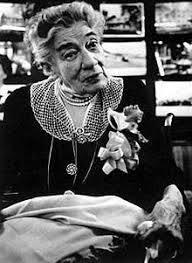 (photo credit: chickenbones.com)
(photo credit: chickenbones.com) Alice Austen
(1866-1952) Photographer
The Alice Austen House, a National Historic Landmark, is located at 2 Hylen Blvd. in Rosebank on Staten Island. The property is a house museum open to the public March through December, Thursday through Sunday, from 12noon to 5pm. Call 718-816-4506 for more information.
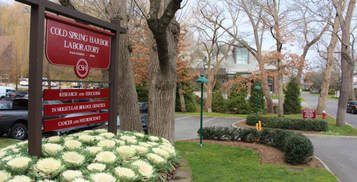 (photo credit: Giselle Barkley)
(photo credit: Giselle Barkley) Cold Spring Harbor, New York
The Brooklyn Institute of Arts and Sciences established Cold Spring Harbor in 1880 as a fish hatchery, but in 1890 shifted its focus to proving or refuting Charles Darwin's theories of evolution. By the 1930s, the combined institutions that made up the Cold Spring Harbor Laboratories were among the most respected in the United States.
Long before it was part of the mainstream for women to be scientists, Barbara McClintock was among the few women of science who made their mark. Winner of the Nobel prize in 1981, she was a brilliant geneticist whose discoveries at the Cold Spring Harbor Laboratory would be the basis for spawning entire new fields of research.
On December 7, 1941, McClintock arrived at the Cold Spring Harbor Laboratory complex and began a 50-year tenure that would see her discover "jumping genes," for which she would eventually win a Nobel Prize in Physiology. The daughter of a physician, McClintock was born and raised in Connecticut and majored in biology at Cornell University, receiving a B.S. in 1923, a master’s degree two years later, and, having specialized in cytology, genetics, and zoology, a Ph.D. in 1927.
It was her graduate school studies that would come to occupy her entire professional life: the chromosomal analysis of corn (maize). She used a microscope and a staining technique that allowed her to examine, identify, and describe individual corn chromosomes. Her specialty took her abroad to study in Germany, which was cut short due to the rise of the Nazi regime. She returned to Cornell, but, because of her gender and university policy, was not given a professor position. From here, McClintock moved onto the University of Missouri, which led to yet another brick wall for her being a women, as they would not grant her tenure.
Alas, she moved to New York in 1941, to work at the Cold Spring Harbor Laboratory on Long Island, where she spent the rest of her professional life. Continuing her research on multi-colored "Indian corn" McClintock meticulously crossed different strains of corn, and eventually realized that Indian corn's random coloration was produced by a "jumping gene" that turned some kernels red, and others yellow.
The scientific community rejected this theory as a "general" rule of genetics and a disheartened McClintock stopped publishing. However, in the 1970s, new research proved McClintock's findings correct--"jumping genes" were a common genetic occurrence in plants and animals, and in 1983, at the age of 81, Barbara McClintock was awarded the Nobel Prize in Physiology or Medicine.
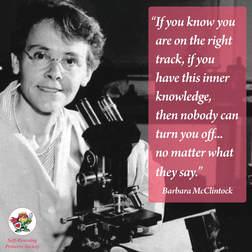
(1902-1992)
Genetic Scientist, Nobel Prize Winner
The Cold Spring Harbor Laboratory is located at 1 Bungtown Road in Cold Spring Harbor on Long Island in NY. The public is welcome to tour the Laboratory's grounds.
-Elisa

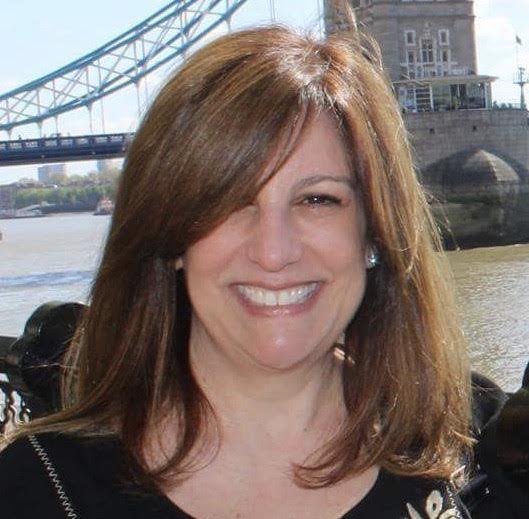
 RSS Feed
RSS Feed